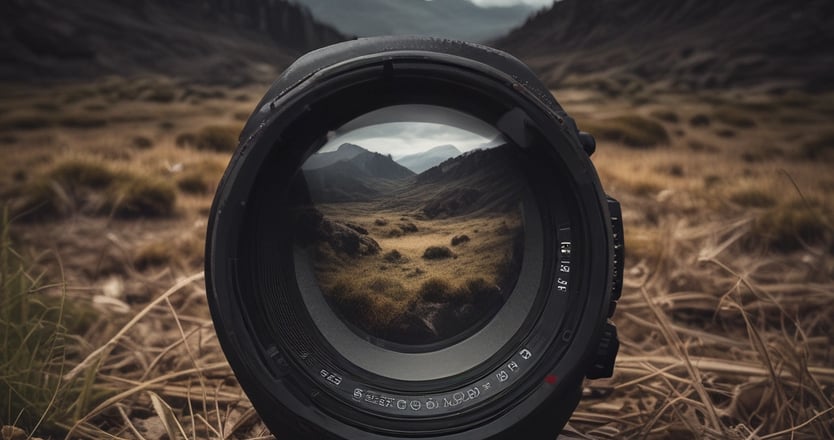Exploring the World of Camera Lenses: A Guide to Types and Uses
Explore the various types of camera lenses and their specific applications. Wide-angle lenses are ideal for landscape photography, while telephoto lenses are perfect for capturing wildlife. Additionally, familiarize yourself with standard, macro, fisheye, and zoom lenses, and discover how each type can enhance your photography experience.
CAMERA LENSES
thru this lenz
2/6/2025


Quick Note: As an Amazon Associate, I earn from qualifying purchases.
Introduction to Camera Lenses
If you're a photography enthusiast or just starting your journey, understanding different camera lenses is crucial. Each lens serves a unique purpose, enabling you to capture the perfect shot depending on the context. In this blog, we'll explore various types of lenses and what they are best used for.
1. Standard Lenses
Standard lenses for example, the Canon RF 50mm, often referred to as 'normal' lenses, typically have a focal length of around 50mm. They accurately reproduce what the human eye sees, making them a favorite among photographers. Standard lenses are incredible for portrait shots, everyday photography, and even street photography due to their versatility. They capture sharp images without distortion, providing a great balance between size, weight, and performance.
2. Wide-Angle Lenses
Wide-angle lenses like the Canon 16-35mm boast a focal length of less than 35mm, making them an excellent choice for landscape and architectural photography. These lenses allow you to capture more of a scene in a single frame, making them ideal for tight spaces or expansive vistas. If you're looking to portray vast landscapes or the grandeur of buildings, a wide-angle lens will serve you well. Just be mindful of the potential for distortion at the edges of the frame!
3. Telephoto Lenses
For those who love wildlife or sports photography, telephoto lenses (typically with a focal length of 70mm and above) are essential such as this Canon 75-300mm lens. They enable you to capture subjects from a distance without compromising detail or clarity. This type of lens compresses distance, allowing you to create stunning portraits by isolating your subject from the background. Telephoto lenses are perfect for getting close-up shots of animals or athletes in action, providing you with a powerful tool for high-quality imagery.
4. Macro Lenses
If you enjoy capturing the tiny details of nature or products, macro lenses are your go-to option. Designed for extreme close-up photography, macro lenses allow you to focus on subjects that are just a few centimeters away. With the ability to reveal intricate textures and patterns, they are excellent for photographing flowers, insects, and jewelry. Macro photography opens up a world of creativity and detail, making it a favorite among many photographers. Quick note: There are even macro lenses for smartphones like this Xenvo Macro and Wide Angle Lens.
5. Fisheye Lenses
Fisheye lenses are unique and fun! They offer an ultra-wide field of view (around 180 degrees) and create a distinctive, spherical distortion in images. These lenses are your best bet for unique artistic shots, allowing you to capture the world in a completely different way. They're particularly popular in creative photography and even in some areas of architecture or interior design, where the goal is to produce immersive and unusual compositional effects. This Keywing Fish Eye Lens for smartphones is a great example.
In conclusion, understanding the various types of lenses and their specific functions can greatly enhance your photography skills. It is essential to ensure that the lens you purchase is compatible with your camera. Different camera systems, such as the EF series and RF series, have their own specific lenses.


Affiliate Disclosure
As an Amazon Associate, I earn from qualifying purchases. This means that if you click on a link to buy a product and make a purchase, I may receive a small commission at no extra cost to you. My goal is to provide you with helpful reviews and recommendations based on my personal experience, and I only promote products that I believe will add value to you. Thank you!
© 2024. All rights reserved.
